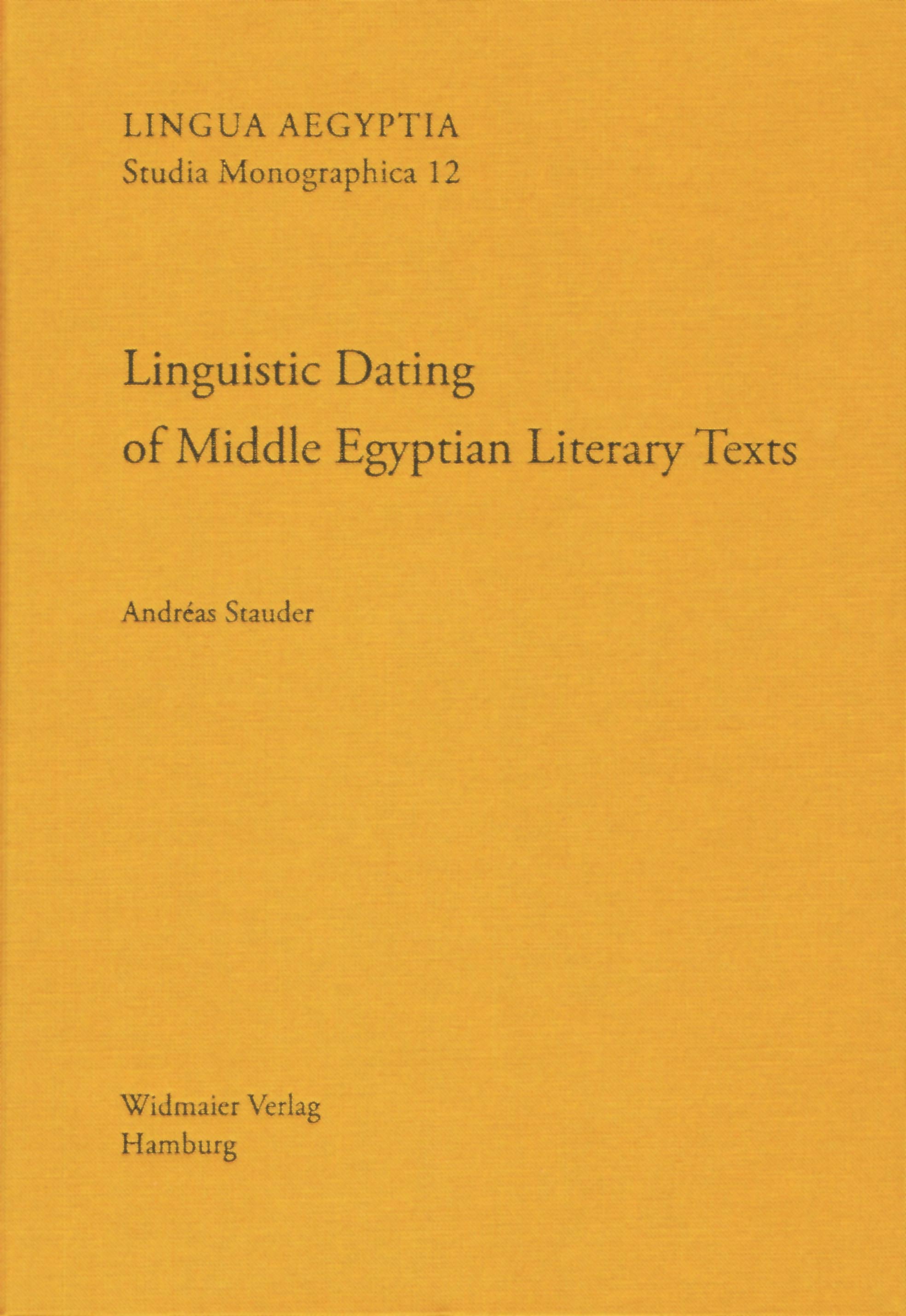The study addresses the dating of Middle Egyptian literary texts from the perspective that has merited the least attention so far, language. General discussions concern aspects of the linguistic situation in early/mid-second millennium BCE Egypt, the nature of the record in which the primary linguistic description is necessarily carried out, processes of textual alteration in the course of transmission, and the configurations of Middle Egyptian in literature.
In the case of Middle Egyptian literary texts, the major strategy for dating consists in studying phenomena of written innovation and obsolescence in relevant registers in order to define upper and lower temporal bounds for a composition to be dated. In a complementary approach, not indexed on linguistic change, distinctive linguistic repertoires and phenomena of linguistic re-composition are directly targeted.
Implications that spring from the proposed datings are outlined with a view on how these could affect the discussion of the cultural functions and of the historical development of Middle Egyptian literature. Beyond dating, the book is more broadly a study of the language of Middle Egyptian literature, of differences internal to this tradition, and of how it productively relates to other written discourses on linguistic levels as much as on semantic ones.
Content overview
Introduction
1 Aspects of the linguistic situation in the early/mid-second millennium BCE
1.1 Ongoing linguistic change documented in lower written registers — 1.2 Higher written registers in the early Eighteenth Dynasty — 1.3 Configurations of written language in the Second Intermediate Period and early New Kingdom — 1.4 Possible linguistic registers of literature in the early Eighteenth Dynasty
2 Conditions and strategies for linguistic dating
2.1 Describing linguistic change in a low-density and highly formal record — 2.2 Expressions that can provide dating criteria — 2.3 Textual alterations in a manuscript culture — 2.4 Language in Middle Egyptian literature — 2.5 Interim summary: Horizons of expectation — 2.6 Devising and applying a linguistic argument: Vernus’ aspectual criteria — 2.7 The limitations of linguistic dating 1: Khakheperreseneb — 2.8 The limitations of linguistic dating 2: The Teaching for Merikare
3 Narrow dating ‘by squeezing’
3.1 Introduction — 3.2 Fishing and Fowling — 3.3 P. BM EA 10475 ro and vso — 3.4 Hymn to Hapi
4 Direct dating: Targeting specific configurations in written language
4.1 Introduction — 4.2 Berlin Leather Roll — 4.3 Sporting King — 4.4 Neferkare and Sisene — 4.5 Enseignement Loyaliste — 4.6 Heavenly Cow — 4.7 The Royal Cycle
5 Neferti
5.1 The early dating: A distinguished option? — 5.2 Neferti, passim: [TL:]vw r sDm[:TL] — 5.3 Neferti 12b, 10e: [TL:]vw sDm[:TL] — 5.4 Neferti 7f, 9c: [TL:]vw[:TL] with non-dynamic events — 5.5 Lexical indications for dating — 5.6 Further indications: The prologue — 5.7 Dating Neferti — 5.8 Appendix: The early New Kingdom horizon
6 The Teaching of Amenemhat
6.1 Evidence for an early dating? — 6.2 Amenemhat 11c-d: [TL:]vw[:TL] with non-dynamic events — 6.3 Possible indications — 6.4 Dating Amenemhat
7 Conclusion
7.1 Methods and strategies — 7.2 Proposed datings and ranges for dating — 7.3 Some implications — 7.4 Prospects
Appendix — Texts — References — Index locorum

